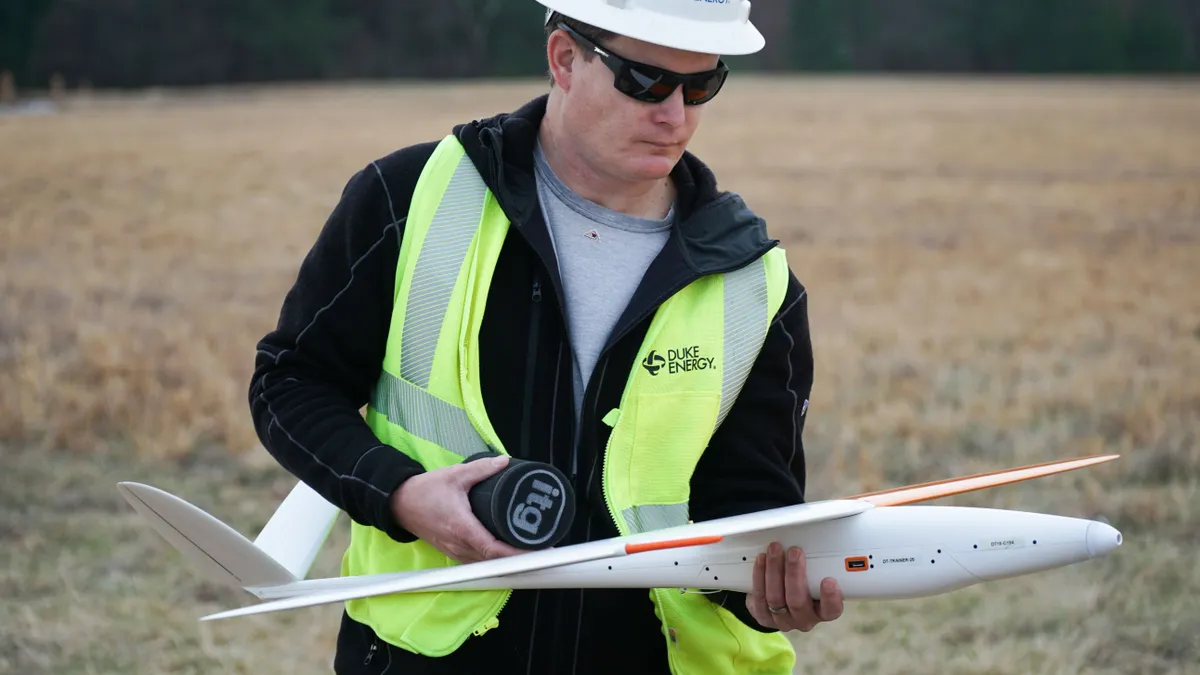Sometimes predicting the future means reaching for the skies. Some are talented enough to do that with their feet planted firmly on the ground.
Unmanned aerial systems are all the flying rage in the utility space. Xcel Energy received federal approval to fly its drones beyond line of sight, while other utilities such as Duke Energy and Ameren are expanding what the quad-propped tools can offer to the grid from the power plant to the distribution system.
Those high-flying attributes make sense—both for safety and financial efficiency—as valuable tools of detection inside the traditional power plant.
“Absolutely, “said Jacob Velky, manager of UAS, Aviation Services, at Duke Energy and a presenter at the POWER-GEN International conference and exhibition which runs December 4-6 in Orlando. “When we think about the challenges of inspecting assets at our generation facilities, unmanned aerial vehicles offer a great alternative to traditional methods, reducing the need for employees to work at heights or in confined spaces.”
Duke Energy has used its UAS—or UAV if you prefer vehicles as a choicer word than systems—fleet to do interior inspections of components such as boilers and cooling towers. The drone capability saves the utility from having erect high-rising scaffolding and avoids other risks and costs.
UAS are not losing any ground when it comes to the renewables revolution, either. Velky pointed that drone deployment for inspecting renewable energy assets was one of Duke’s first unmanned aerial use cases.
“Using a thermal camera to inspect solar panels is some of the lowest hanging fruit in terms of deployment, in my opinion,” he said, noting that the utility’s home state of North Carolina is one of the nation’s leaders for installed solar capacity. “We firmly believe that UAVs are also beneficial for inspecting wind asset and have seen great strides in the industry toward autonomous flight and defect detection in this space.”
Drones used by utilities also can check out storm damage, assess repair needs and offer a bird’s eye view without the multi-million-dollar investment of an on-board pilot inside a mechanical bird. The UAS pilots are highly trained and the aerials can accommodate an array of data collection well beyond the limits of the human eye.
Whatever the electric power future holds, it will include the three D’s: Decarbonization, Decentralization and Digitization.
“Whether people recognize it or not, the utility industry is going through a digital transformation,” Velky pointed out. “Antiquated methods of inspection are being replaced with new methods that allow better insight into asset health and allow leaders to make better informed decisions prior to asset failure.”
Velky will deliver a session on the drone’s capabilities and uses in power plants in the POWER-GEN International Knowledge Hub Wednesday, December 5. Knowledge Hubs are a new feature for POWER-GEN International—shorter, more personal sessions held on the exhibition floor, giving more attendees access to key information. Hub topics will include emerging grid technologies, decentralization, energy storage integration and the future of baseload power.
POWER-GEN International will be celebrating 30 years in 2018 on December 4-6 in Orlando, FL. As the World's Largest Power Generation Event, POWER-GEN International is the industry leader in providing comprehensive coverage of the trends, technologies and issues facing the generation sector. Displaying a wide variety of products and services, POWER-GEN International represents a horizontal look at the industry with key emphasis on new solutions and innovations for the future. Learn how to SAVE on your registration here.






